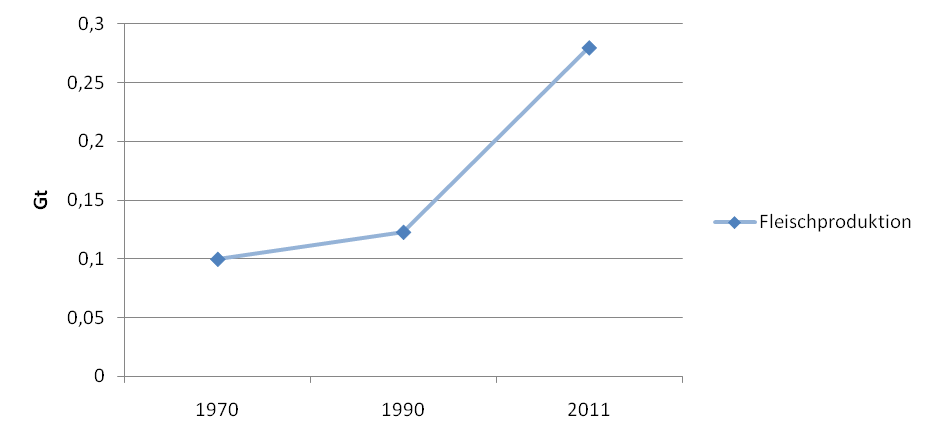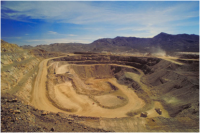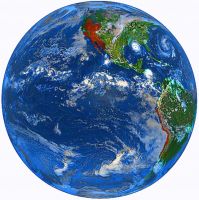Global consumption of resources
The sufficient availabillity of natural resources (energy sources, water, surface) is not only an essential condition for prosperity and economic vitality but also the foundation for the survival of the human kind. But because of the currently way of the resources use the carrying capacity of our planet is in danger to collapse.
The excessive utilisation of resources leads to a scarcity of natural stocks of non-renewable resources (f.i. fossil oil, metals) and to an overuse of renewable resources (f.i. fish population, biomass production). Furthermore natural circuits are changed and partly overloaded by emission and waste.
The following counter shows the former global consumption of some chosen resources of 2013.
| 2013 | |
|---|---|
| Energy demand (toe) |
8550000000
|
| Renewable energy production (toe) |
1600000000
|
| CO2-emissions (t) |
29200000000
|
| Withdrawal of resources (t) |
64200000000
|
| Water consumption (t) |
4330000000000
|
| Meat production (t) |
280000000
|
The listed data in detail:
Energy demand
One importent indicator of the global consumption of resources is the demand of primary energy. Nowadays approximately 87% of the primary energy comes from non-renewable sources (fossil oil, coal, gas, nuclear energy). The unit of the primary energy is the oil equivalent (toe): 1 toe confirms to the energy contained in one tonne fossil oil. The global consumption of primary energy rised constantly in the last decades. About 4,35 Gtoe were consumed in 1970, about 6,30 Gtoe in 1990 and about 8,55 Gtoe are predicted for 2011. Quelle: IEA 2010 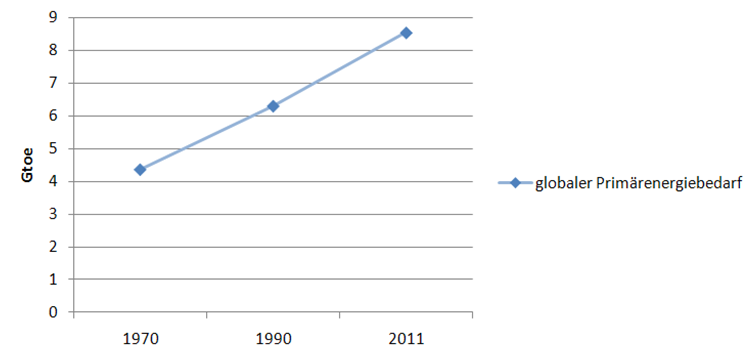
Renewable energy production
One of the great challengesof our time is the transition to a renewable energy supply. The total amount of used primary energy coming from renewable sources is now more than twice as 1970, but the proportion of renewble energy on the global demand of primary energy has not improved significantly. Quelle: IEA 2010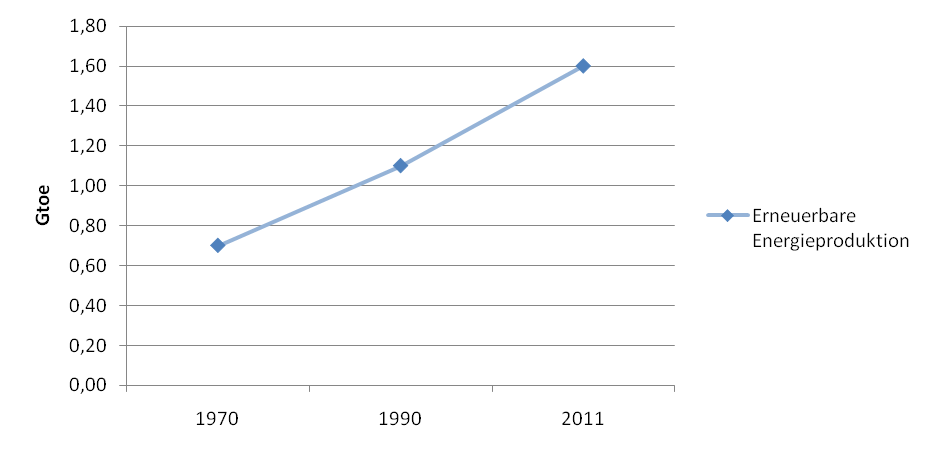
CO2 -emissions
The progressing climate change is one of the most immediate environmetal problems. The contribution of various greenhouse gases (CO2, methane, CFC,...) on the global warming is indicated by the CO2 equivalent. The emission of greenhouse gases heavily increased in the last decades. About 14,0 Gt CO2 were emitted in 1970, about 21,0 Gt CO2 in 1990 and about 29,2 Gt CO2 are predicted for 2011. Quelle: IEA 2010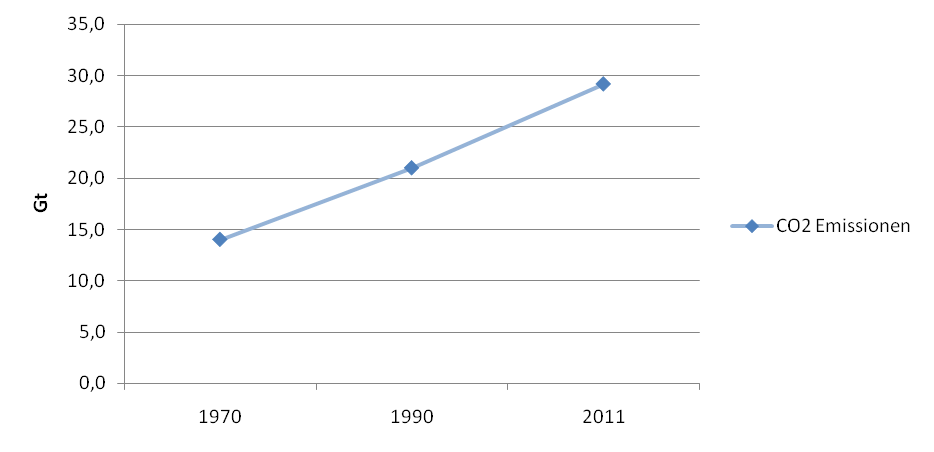
Withdrawal of resources
The indicator withdrawel of resources considers energetically and materially used resources (fossil energy sources, bio mass, mineral ores,...). The amount of natural resources used for the production of goods and services heaviliy increased in the last decades. About 26,6 Gt were harvested in 1970 and more than twice (64,2 Gt) are predicted for 2011. Quelle: Krausmann et al. 2009 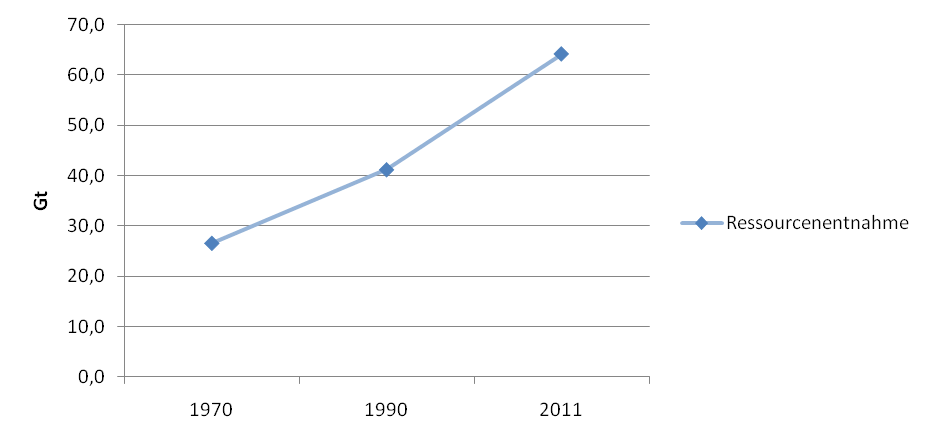
Water consumption
The agriculture is the greatest water consumer on earth. 70% of the global water is used for farming, 20% is used by the industry and 10% by private housholds. The global water consumption is nowadays nearly twice as high as 1970. Quelle: UNESCO, World Water Report 3
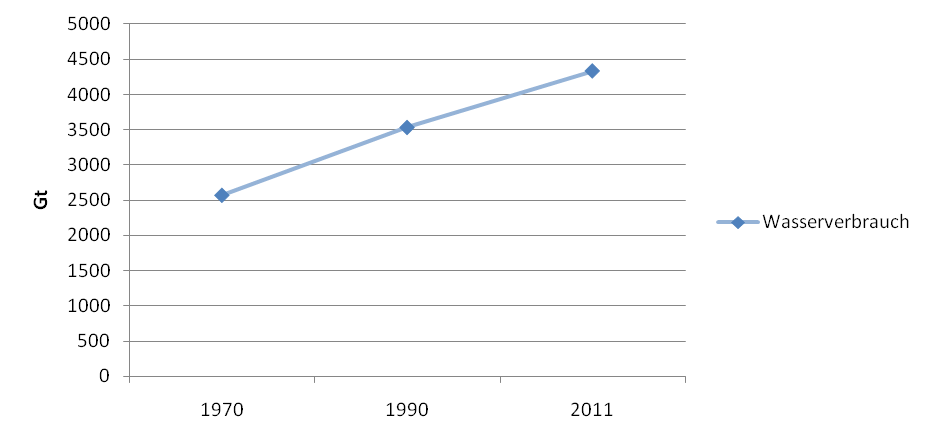
Meat production
For the production of one calorie of meat you have to feed from 5 up to 30 calories (depending on the animal) of vegetabels. The currently cattel industry is responsible for many environmental problems, such as climate change, water consumption, surface utilisation, soil erosion, nitrogen and phosphorus pollution. Die global meat production ist nowadays nearly three times as high as 1970. Quelle: FAO World Food Outlook 2008
